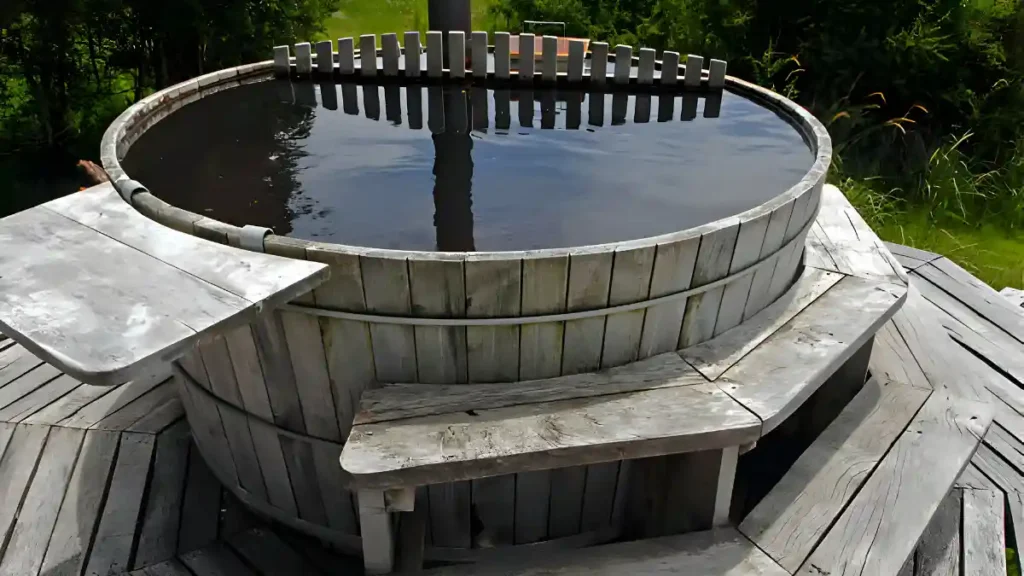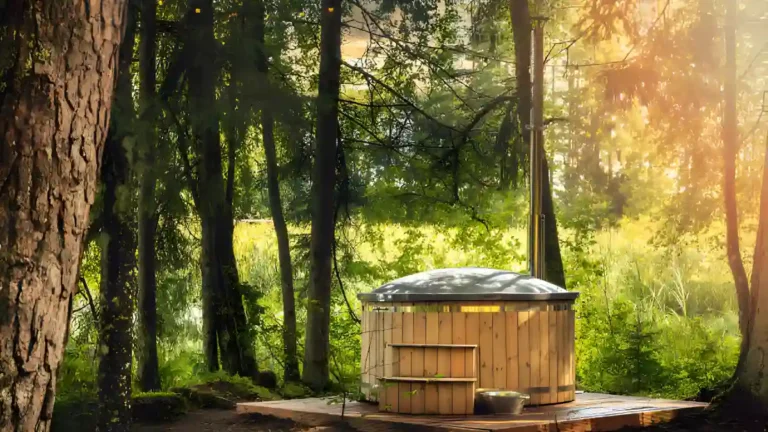A rising number of people are seeking to embrace simplicity and re-establish a connection with nature in a fast-paced world full of contemporary comforts. Indulging in the comforting warmth of this tub in your backyard is one method to accomplish this. Picture the peace of bathing in steaming water outside as the sound of chirping birds and rustling leaves fills the air. A do-it-yourself wood fired hot tub provides a special chance to combine relaxation and artistry. The purpose of this tutorial is to give you the necessary instructions and things to think about when building a wood fired hot tub.
Build a DIY wood fired hot tub step-by-step:
Choosing the ideal site
Select an area in your backyard that is sturdy and reasonably level. To avoid fire threats and to allow for enough ventilation, make sure it is not too close to any buildings or trees.
Getting supplies
- Large tub container or stock tank (made of wood or metal)
- For the heat exchanger, copper tubing or stainless steel coil might be used.
- Thermoplastic silicone tubing
- Wood for the decking and frame
- Material for insulation (optional, but preferred)
- Firebox or wood stove
- Bricks or stones for the fireplace
- waterproof adhesive
Arrangement and organizing
- Choose the dimensions and design of your hot tub. Think about how many people it can hold.
- When choosing a spot for your tub, make sure it’s both handy to a water source and sufficiently remote from any buildings or trees.
Building the wood fired hot tub
- After determining the proper lengths for each piece of wood, construct the tub walls. Use weatherproof nails or screws to fasten the components together.
- To assist in maintaining heat, line the interior of the tub with insulation.
Making the heater or stove
- Build a metal box with a wood input and a smoke outlet if you’re making your stove. Make sure it has enough space to properly heat the water.
- Make sure there is enough room for people to comfortably access and exit the tub by placing the stove at one end of it.

Setting up the stove
- Make sure the stove is firmly and steadily positioned inside the tub.
- Affix the stove to the flue or chimney, ensuring that smoke is directed away from the bathtub area.
Supply of water
- After filling the tub with water, attach a hose or pipe to a nearby water source.
- Check for leaks in the tub and fix anything that has to be fixed.
Last minute details
- Make sure the entire surface area of the tub is covered with a waterproof liner or tarp.
- To stop heat loss, cover any spaces between the tub and the ground with gravel or sand.
Starting the fire
- Build a fire in the stove by adding dry wood.
- Keep an eye on the water’s temperature and add extra wood as necessary to keep it at a comfortable level.
Enjoy your wood fired hot tub
- Invite loved ones to join you for a soothing experience once the water reaches your ideal temperature.
- Never forget to keep an eye on the fire and take safety precautions.
Conclusion:
In conclusion, for those who are prepared to put in the time and effort, creating a DIY wood fired hot tub may be a fulfilling and fun undertaking. In addition to offering a tranquil and natural experience, it also gives you the satisfaction of making something yourself. To guarantee functionality and safety, however, meticulous preparation and attention to detail are important when approaching the project.
Certainly! If you’d like to learn more, please consider following our WhatsApp Channel: Harvest Gardening
A frequently asked questions:
Q1: What is a wood-fired hot tub?
A1: An authentic and rustic swimming experience can be had in a wood-fired hot tub, which is heated by a wood-burning stove or heater.
Q2: How do I maintain a wood-fired hot tub?
A2: This tub requires routine cleaning of the tub and its parts, water chemistry monitoring, and adequate ventilation for the wood-burning stove. Ensure the stove or heater is routinely inspected and maintained for best results.
Q3: What are the benefits of a wood-fired hot tub?
A3: This tub offers several advantages, such as the tranquil and natural atmosphere it creates, the capacity to heat the water without the need for electricity, and the calming sensation of taking a bath outside.

